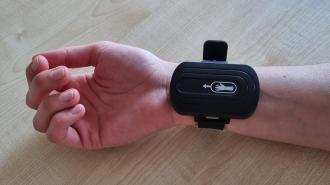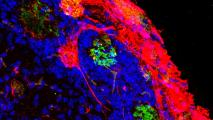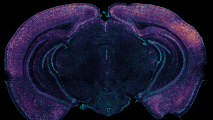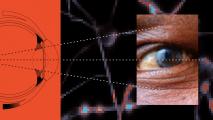When Scottish singer Lewis Capaldi began struggling with tics during a German tour stop in February, the crowd stepped in to help, singing the hook for “Someone You Loved” for him.
It was a heartwarming show of acceptance and support for a difficult neurodevelopmental disorder that is often stigmatized or played for laughs. Capaldi, by being open about his condition, has become something of a public face for Tourette syndrome.
But it’s something he’s worn on his wrist that may end up being even more important for Tourette patients: a device that can help control tics. The wearable, called Neupulse, was found to reduce the severity and frequency of tics in a new clinical trial, the University of Nottingham announced. A Nottingham spin-off company, Neurotherapeutics Ltd., created the devices and will look to commercialize them.
A wrist-worn device was found to reduce the frequency and severity of Tourette syndrome tics in a clinical trial.
“Though the Neupulse device is still early in development, the results of this UK-wide double-blind clinical trial have been extremely encouraging,” Nottingham’s Stephen Jackson, who is the chief scientific officer (CSO) of Neurotherapeutics, said.
“This device has the potential to dramatically improve the lives of those with Tourette syndrome, who often face challenges managing their tics, by providing increased control over their tics on demand.”
What is Tourette syndrome? A neurodevelopmental disorder that usually manifests itself in early childhood or adolescence, Tourette syndrome’s hallmarks are involuntary physical and vocal actions called “tics.” The Tourette Association of America (TAA) notes that people with Tourette syndrome are also commonly affected by another condition, like ADHD or OCD.
It’s not common, but it’s not that rare: current estimates are that one out of every 160 children between the ages of 7 and 15 in the US have Tourette syndrome, according to TAA. The condition may resolve itself, or carry over into adulthood.
Despite its prevalence, the disorder suffers from a lack of therapies, and “effective treatment for tic disorders is an area of considerable unmet clinical need,” the Nottingham researchers wrote in their preprint paper of the trial results.
Previous research at Nottingham used repetitive bouts of electrical stimulation at the median nerve of the wrist to train the brain into rhythmic electrical activity, called “brain oscillations.” These oscillations were associated with suppressing motion, and the team found that the pulsing lessened tic symptoms while also curbing the subjective urge to tic.
The trial: For their double-blind, sham-controlled trial, the researchers enrolled 121 people with Tourette syndrome from all around the UK. They were randomly assigned to three groups: one group was given a functional Neupulse, the second received sham devices that served as a placebo, and a third were waitlisted to get access to the device, serving as a control.
All of the patients were instructed to use their device at home for 15 minutes, five days a week, for four weeks, at a similar time each day. Each week, the participants reported in, with a subset providing videos of their experience.
The team used the change in patients’ scores on a measure of tic severity (the “Yale Global Tic Severity Scale – Total Tic Severity Score”) at the four-week mark, compared to their baseline, to determine the effectiveness of the device.
Most participants who used working Neupulses had a reduction in tic severity of at least 25%.
The results: After four weeks, people who received active devices saw an average 7.1 point reduction in tic severity — amounting to a 35% reduction. (The sham and waitlist groups’ scores fell by only 2.13 and 2.11 points from baseline.)
All told, most participants who used working Neupulses had a reduction in tic severity of at least 25%.
The team also measured the frequency of tics while the device was active, using the videotaped subgroup.
“The device definitely helped my tics,” said Mylo, a 13-year-old trial participant. “I still did the occasional tic when it was on but the need to do it was a lot less.”
In Mylo’s experience, the device needed to be worn properly, lest it be a bit painful, but when working right, it felt “a bit like a fizzing on my wrist and forearm, not painful, just a bit different.”
Capaldi himself tested a Neupulse before a show in Nottingham.
“The results were remarkable – Lewis stated that the stimulation made him feel calmer and the device clearly suppressed the head and shoulder tics which can be quite painful for him,” Jackson, the Nottingham researcher and Neurotherapeutics CSO, told the BBC.
Neurotherapeutics is now looking to commercialize the device, with designs on having it available by 2026.
We’d love to hear from you! If you have a comment about this article or if you have a tip for a future Freethink story, please email us at [email protected].





